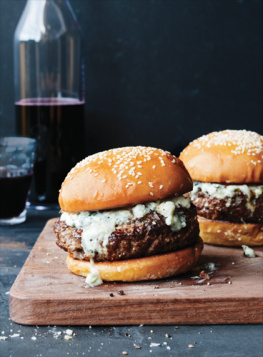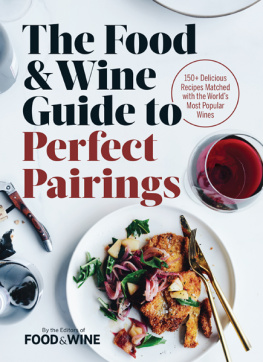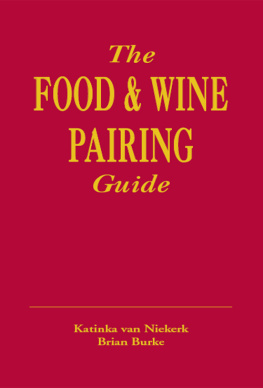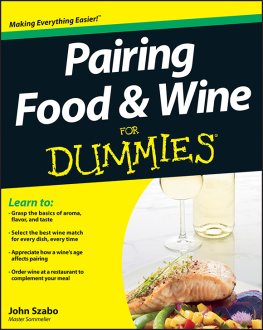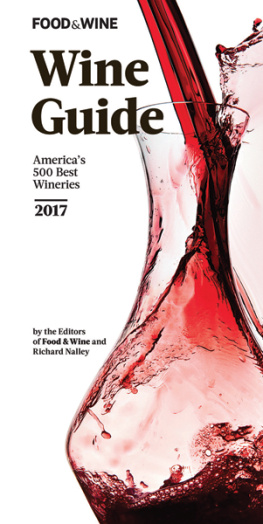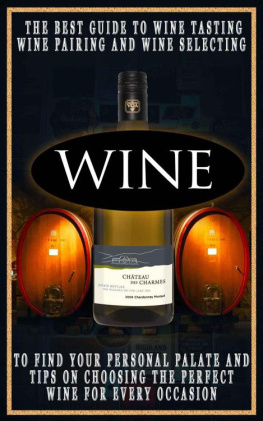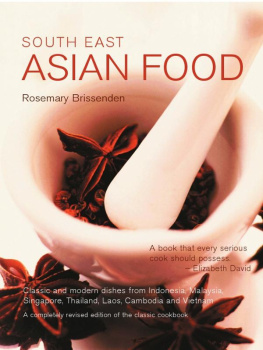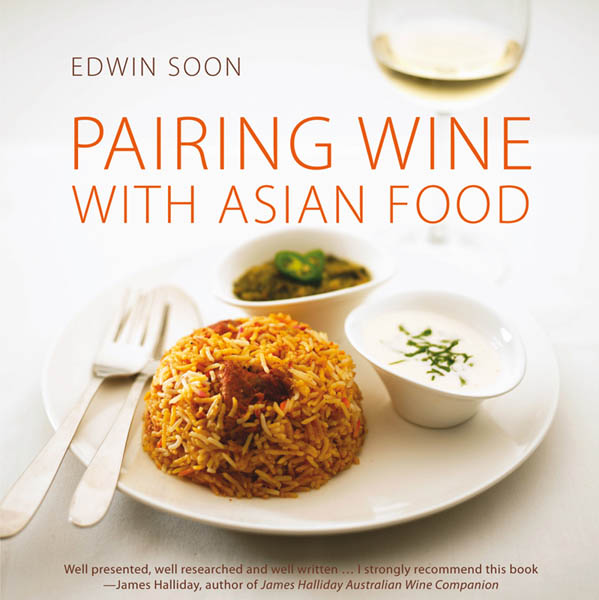Pairing Wine
with Asian Food
Edwin Soon

Praise for Pairing Wine with Asian Food
Millions of people will appreciate this book, which opens a new dimension to the enjoyment of wine. It marries cultures and cuisines with commonsense and experience.
Jeremy Oliver, author of The Australian Wine Annual
You love wine. You love Asian food. But you have always been worried how to put the two together. This thoughtful, original and elegantly produced book shows you how. Thoroughly recommended.
Clive Coates MW, author of The Wines of Burgundy and Cte dOr
Well presented, well researched and well written I strongly recommend this book
James Halliday, author of James Halliday Australian Wine Companion
Contents
Introduction

It used to be a simple affair matching wines with food: white wine with white meat; red wine with red meat. But thats for Western food. Venture into the Asian kitchen and things can begin to look complicated. But it neednt be.
Which wine would you choose to accompany a Thai green curry? Do you match the wine to the chicken or to the eggplant? What about the lemongrass and the coconut milk? And wont the fiery chili render your taste buds numb to the wines subtle flavors?
Matching wines with Asian dishes can seem a daunting affair because there hasnt been a history of Asian cuisine evolving with wine. Yet the successful pairing of wine with Asian food is not an arcane undertaking. In this book, you will learn the most important theories and be well on your way to good food and wine liaisons.
First and foremost is to observe the taste relationship of the food with the winethe saltiness, sweetness, sourness, and bitterness in food; and the sweetness, sourness, and bitterness in the wine.
Understanding this relationship and knowing whether to match or contrast the sweetness or the saltiness or sourness will enable you to make good judgment calls whenever youre selecting a wine to go with your Asian meal.
In a hurry? Just flip the pages of this book to the section entitled An Occasion to Remember where dishes are categorized by theme (for example, a finger food party) and type (such as curries or seafood).
Delve deeper into this book and you will find checklists of ideal wines to have in the cellar when you next cook Asian. In A Serve of Asia, some of Asias classic dishes are easily matched to suggested wines.
Whether youre a wine lover or new to the subject, this book encourages you to have fun and experiment. After all, wines are meant to be enjoyed with food, especially now with Asian food.
Edwin Soon, Singapore
Understanding Asian Flavours
In pairing wine with Asian food, it helps to have an understanding of the taste components, textures, sensations, and flavors of Asian dishes as well as those of wine. When the wine and dish are matched for all of the above, a heavenly marriage is achieved. The food and wine will sing in the mouth and bring smiles all around at the table.
Components
In food, especially Asian food, there are sweet, sour, salty, and bitter tastes. Call it the components if you like. Salty components in dishes come from salted fish, dried oysters, fish sauce, yellow and black bean paste, and soy. Think sweet and we mean honey, barbecue sauce, mirin, and plum sauce. Lemon juice, vinegar, and tamarind come to mind when we refer to the sour components in Asian dishes. Some foods are bitter such as petai bean (parkia speciosa), Thai eggplant, bittergourd, and several other herbs.
Why do we have to pay attention to the components? This is because wine reacts differently to the sweet, sour, salty, and bitter tastes in Asian food. Chew on a piece of green mango, and then take a sip of a generic white wine. Youll find that the wine tastes sweeter and seems unbalanced. At the same time, youll probably cringe from the sourness of the mango. This sourness is accentuated by wine. The reason? Sour green mango makes the wine taste relatively sweeter and flabby. The effect is similar with salty foods. Sweet foods too will also change the taste of wine and usually makes wines that are not sweet, taste sour.
Textures
Whats your taste in meat? Do you like it pulled, stringy and almost crispy, like that served with Thai rice, or in all its fatty glory as in a Chinese pork knuckle stew? Food has textures that can be light (steamed fish), rich (coconut-based curries), coarse (peanut sauce, fried tofu skins), and fatty (barbecued pork, wagyu beef ). They can be matched accordingly to appropriate wines.
Stirfried food with crunchy textures can be enjoyed with fruity white wines or light red wines of fine consistency. Curries and stews with rich moist texture are best with red wines with rich texture or full-bodied white wines with high alcohol. This is discussed in the following chapter.
Sensations
Do you have a taste for the piquant where you need to add fresh chopped garlic, or a slice of ginger or even chili to your dish? These are the sensations of food in the mouth that have to be considered when matching wines with food. For example, the tartness of a dry wine often accentuates the chili sensations, as will the tannins in a red wine with high alcohol.
Flavors and Intensity
From the herbal scents of lemongrass and malty taste of miso to the exotic aromas of five spice and lychees, the flavors of food need also to be considered. Ensure that flavors do not clash, even though you have matches of the components and the textures and sensations.
Fortunately, flavor matching is usually easy. For example, a youthful Merlot exhibits plum-currant characteristics whilst a Syrah often has raspberry and blackberry aromas. Either wine, with their strong fruit characteristics, have flavors that easily meld with those of say, roasted duck with plum sauce, because the dark fruit flavors in both are complementary.
Similarly, sweet and sour dishes or food basted with honey easily finds complementary flavors in a young Chardonnay, which might have pineapple, lychee, peach, and butter overtones.
When matching by flavor, it is important to match intensities of flavor in both food and wine or one will overcome the other in flavor.
Heavenly Marriage
Imagine serving an aged Riesling with some tangy crisp acidity and citrus mineral-oil flavors alongside a steamed river fish with ginger, soy, and chili. The citrus-tart nature of the wine contrasts the salty soy in the dishes. The wines fine consistency is matched to the fishs delicate texture. The wines citrus flavor is a counterpoint to the ginger and soy tastes whilst the light sweetness in the wine parries the chili. This is a match in components, textures, sensations, and flavor!
Problem Ingredients

Chili
Alcohol in wine and chili in food can clash. Wine contains alcohol which has a warming effect in the mouth. Wines with high alcohol content can exacerbate the heat in the mouth. Chili contains capsaicinthe source of the burning sensation. Alcohol can spread the chili sensations around the mouth making everything taste hotter than ever.
The solution? Low alcohol wines. German wines are famous for having low alcohol content. Another option is to use sweet wines to tame the firethe sugar soothes the burn. Alternatively, bubbly wines can be called upon for some cleansing actionthe tangy acidity cleans the palate and stimulates the taste buds whilst the bubbles accentuate and refresh.


